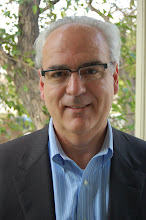THE FIRST IN A SERIES OF SEVEN STORIES: M. R.
This child was admitted to Hillsides on 4/4/06 and discharged on 4/18/07. Prior to coming to Hillsides, this client had experienced multiple failures in school. In addition to poor academic progress, he had behavioral problems, and was a chronic truant as well. At Hillsides Education Center, he achieved stability in both school attendance and performance, developing a particular interest in the industrial arts program. He reduced his aggressive behavior and truancy.
Upon discharge, he went to a group home in San Bernardino to be closer to his grandfather. M.R. was a street-savvy kid who was not a good fit for Hillsides. His grandfather came in regularly for family treatment, but as he lived almost two hours away, it was difficult for him. Although we were not optimistic about M’s prospects for success, his grandfather very much wanted him to be closer to home. We didn’t oppose this plan.
A DCFS Team Decision Meeting was arranged, but because he moved to another group home, aftercare services was not recommended. He left the group home after two or three weeks (he was considered on status AWOL, Absent Without Leave) and lived on the streets for a while. He apparently was placed in several group homes following his sojourn on the streets.
REFLECTION
The plan to move the client closer to his grandfather was a good one. Things DCFS might have done: 1) Explore the suitability of the receiving group home for this client, and 2) Had a Wraparound provider involved with the transition with a goal of placing him with the grandfather. (Wraparound is a program where the process of creating safe places for a child includes wrapping support services around the child and the entire family to increase the possibility of successful outcomes).
CONCLUSION
1. Family involvement in the treatment process is a key factor.
2. A plan for discharge agreed by all parties, Hillsides, DCFS, the child and the family is necessary for a successful transition. (A plan is not going to work if the child or the receiving party is saying they are not ready.)
3. We should consider mandatory supportive services in the home.
4. Once a plan has been agreed upon, there should be some benchmarks set to determine the move-in date.
5. As a general rule, the residential treatment agency should provide Wraparound services to the receiving family where ever possible, since they are the ones who know the child and the family. (This would entail an exception to the Service Provider Areas (SPA) specific structure of the Wraparound program, since most residential treatment centers do not have Wraparound programs in all the SPAs.)
ACTION
See below to find out what you can do to help a child and youth in foster care.
Subscribe to:
Post Comments (Atom)



No comments:
Post a Comment